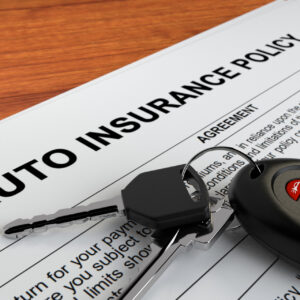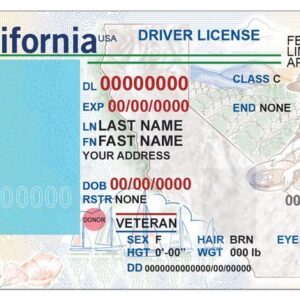Driving long distances day in and day out across Florida highways? Between Orlando-Miami commutes, Tampa traffic, and unpredictable weather, you need affordable auto insurance built for high-mileage lifestyles. Here’s everything you need to know to find cheap Florida auto insurance in 2025—even if you log 20,000+ miles a year.
🚗 Why High-Mileage Commuters Pay More (and How to Fight It)
It all comes down to risk exposure: the more you drive, the more likely you’ll file a claim. According to industry insights, crossing 15,000 annual miles often triggers higher premiums—insurers see increased crash likelihood and adjust accordingly (insure.com, lainsurance.com).
But don’t despair—while mileage works against you, smart tactics can help neutralize that effect:
- Adjusting commute declarations: Inform your provider when commuting patterns change—even slight mileage reductions can unlock low-mileage discounts (lainsurance.com).
- Telematics programs: These usage-based plans monitor your actual miles and driving style. Safe, high-mileage drivers often see 10–20% savings (en.wikipedia.org).
Final takeaway: yes, high mileage hurts your rates—but strategy and smart policy adjustments can soften the blow.
✅ Florida’s Landscape: Rates, Requirements & Trends in 2025
🎯 Minimum Coverage Here’s What Florida Requires
Florida mandates:
| Coverage Type | Minimum Limit |
|---|---|
| Personal Injury Protection (PIP) | $10,000 per accident |
| Property Damage Liability (PDL) | $10,000 per accident |
Note: Bodily injury liability isn’t mandatory—but smart financial planning suggests carrying more (valuepenguin.com, experian.com).
💰 Average Costs
- Minimum coverage averages $157/month (~$1,888/yr) .
- Full coverage (liability + comp + collision) averages $246/month ($2,948/yr).
That means you’re typically paying $12–20/month more for each additional $1,000 in coverage. With high mileage, leaning on discounted full coverage makes fiscal sense.
📈 What’s Driving Florida Rates Up?
- Huge influx of uninsured drivers (≈20%) & tourism traffic (mysummitwealth.com).
- Severe weather events—hurricanes and hail—keeping repair costs high .
- General inflation in parts and labor, pushing premiums higher nationwide .
🔄 The 2025 Outlook: A Buyer’s Market
After two years of steep increases (20%+), premiums have stabilized. Over 4% of drivers switched insurers last month, thanks to a surge in competitive rates—especially in high-risk states like Florida (marketwatch.com). Now’s the moment to shop.
🧭 How High Mileage Affects Insurance — Real Talk
1. Premium Inflation
Above 15,000 annual miles usually means a premium hike. But for ultra-high-mile drivers, the annual cost can be justified by full coverage.
2. Age & Vehicle Age Matter
Older cars with high mileage cost less. Premiums drop roughly 2.5% per year as a vehicle ages — assume the same for mileage depreciation (reddit.com, thezebra.com).
3. Telematics: Your Mileage Advantage
Telematics — especially usage-based programs like Progressive Snapshot — track miles and driving behavior. This rewards safe driving with discounts of 10–20% (en.wikipedia.org).
4. Annual Review Is a Must
Mileage habits change—new job? Remote work? Always update your insurer to keep rates as low as possible (thezebra.com).
🏆 Top Insurers for High‑Mileage Drivers in Florida, 2025
Here’s a quick look at reliable insurers for high-mileage commuters:
| Company | Best For | Est. Full-Coverage Rate | Highlights |
|---|---|---|---|
| Travelers | Overall cheapest high-mileage full coverage | ~$113/mo (full), $55/mo (min) (experian.com, moneygeek.com) | Strong discounts, mobile app |
| State Farm | Consistent rates, high-mile + high-value car | ~$163/mo full coverage | Broad agent network, telematics (Drive Safe & Save) |
| GEICO | Minimum coverage, high-mile commuters | $39/mo min; ~$167/mo full | Easy online quotes |
| Mercury | Low-cost minimum coverage | ~$127/mo min | Ideal if you drive often but cars aren’t pricey |
| Amica | Best discounts, including bundling & app use | — | J.D. Power top-rated |
| Auto‑Owners | High satisfaction for bundled policies | — | Few complaints |
💡 Pro Tip: Full coverage is typically necessary if your car’s worth over $5,000 or if you’re financing it .
💡 Smart Savings Strategies for High‑Mileage Drivers
A. Shop Around Annually
With rates stabilizing, comparing quotes could mean savings of several hundreds per year (marketwatch.com).
B. Use Telematics or Pay‑Per‑Mile
- Progressive Snapshot, GEICO’s DriveEasy, State Farm’s Drive Safe & Save, etc.
- They give safe, high-mileage drivers a financial edge .
C. Increase Your Deductible
Even a jump from $500 to $1,000 can save 10–20%—just keep a cushion in your savings .
D. Reassess Coverage on Older Cars
Once a car hits 100,000 miles or depreciates heavily, consider dropping comp/collision—the expected payout may not cover the premium increase (kiplinger.com).
E. Bundle for Discounts
Home, auto, boat—bundling equals savings. Companies usually offer 5–25% off .
F. Defensive Driving Courses
A court-mandated or insurer-approved course can reward you with 5–10% savings .
G. Keep Record Clean
Avoid tickets and accidents—they can cause 20–100% premium spikes.
📋 Insurance Comparison Table
Here’s how different insurers stack up for high-mileage commuters:
| Company | Full Coverage (est.) | Minimum Coverage | Telematics | Bundle Discount |
|---|---|---|---|---|
| Travelers | ~$113/mo | ~$55/mo | ✔️ | ✔️ |
| State Farm | ~$163/mo | ~$55/mo | ✔️ | ✔️ |
| GEICO | ~$167/mo | ~$39/mo | ✔️ | ✔️ |
| Mercury | n/a | ~$127/mo | ✖️ | ✔️ |
| Amica | Competitive | Competitive | ✔️ | ✔️ |
| Auto‑Owners | Competitive | Competitive | ✔️ | ✔️ |
✅ Travelers and State Farm are consistently strongest for high-mileage full coverage. GEICO and Mercury shine on budget minimum coverage.
📦 Real User Experiences
From Florida Reddit threads, commuters weigh in:
“I pay $900 annually to GEICO, full coverage, 2013 SUV, over age 50, no traffic violations or accidents in 10+ years; short commute.” (lainsurance.com, moneygeek.com, reddit.com)
That’s just $75/month—proof that clean history and mature age help a lot.
🎯 Smart Action Plan: Stop Overpaying in 2025
- Check your commute mileage: Got a shorter route or remote/day job? Tell your insurer.
- Explore telematics plans: Ask your current provider what safe-driving programs they offer.
- Rate shop: Run quotes annually from 3–6 insurers, including Travelers, State Farm, GEICO, Mercury.
- Raise deductible: Only if your emergency fund supports it.
- Bundle or drop collision/comp: Evaluate what makes sense after 100K+ miles.
- Stay clean: No tickets, move safely, and take a defensive-driving course if helpful.
📌 Final Takeaways
- Mileage isn’t destiny: High-mileage commuters can get cheap auto insurance if smart.
- Florida’s locked in: $150–250/mo full coverage is normal—but you can lower it.
- Compare aggressively: Buyers’ market—time to switch.
- Use tools: Telematics, bundling, safe driving = savings.
- Evolve with your lifestyle: Regularly update mileage and recheck. Your rates should adjust.
🔗 Trusted Sources & Further Reading
- Insights on price cooling and competitive shifts in Florida auto insurance
- Mileage’s impact + low-mileage programs nationwide (insure.com)
- Florida-specific cheapest insurers breakdown
- Telematics systems like Progressive Snapshot (en.wikipedia.org)
- Savings tactics: defensive driving, telematics, bundling
- 100K‑mile rule for coverage adjustment (lainsurance.com)
🤝 Your Next Move as a High‑Mileage Floridian
Don’t resign yourself to pricier premiums. High-mileage commuting can go hand-in-hand with smart money for coverage. Use this guide to:
- Actively manage your mileage reporting.
- Harness usage-based programs and yearly quote checks.
- Reassess older vehicles versus insurance value.
Florida’s roads are long—your insurance journey doesn’t have to cost you. Smart strategies can make 2025 your year of putting value back in the driver’s seat.
Let me know if you’d like additional tips, local insurer reviews, or sample quotes!






